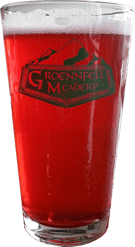There are a number of ways to clarify a fermented product which can be roughly grouped into four categories:
- Patience
- Recipe
- Clarifying Agents
- Filtration
1. The first one is the easiest to explain: Patience.
If you wait long enough, almost any fermented beverage whether it is mead, wine, cider, or whathaveyou, will clear up. Hazy proteins, frustrating yeast particles, and all the things that cause haze in your beverage will fall to the bottom, and all you need to do is separate the beverage from the sediment. Sometimes this can take weeks, sometimes years. Sometimes it never happens, so on to the next technique…
2. Create a recipe that will self-clarify.
This can be as easy as using a yeast which likes to fall out of solution after fermentation has completed (this is technically known as flocculation). Or, perhaps you simply control your fermentation and aging temperatures to help precipitate particles out of solution. It can also be as difficult as finding a honey which has undergone a sufficient amount of pre-fermentation processing that the proteins and waxes that cause haze are already removed. If you’re using fruit, you might need to use pectic enzyme to break down the pectin which causes cloudiness. Then again, this starts to cross the line into…
3. Using clarifying agents.
The line between a recipe and using clarifying agents is (ironically) a little hazy. Essentially the only difference is whether the agent you are adding has a purpose other than making your beverage clear. For example, pectic enzyme allows for better utilization of compounds found in fruit resulting in greater fermentability, and it also results in a clearer product. Bentonite just makes your mead sparkle. If all else fails, you can resort to…
4. Filtering your beverage.
Filtering a fermented product is a very common practice in the industry, but has some negative consequences. With sufficient filtration there is almost no chance of sediment in the bottle, yet there will almost certainly be a loss of flavor and aroma. There will also be no way to bottle condition your beverage (if you want it to be sparkling), since there will be no yeast in solution at all.
So, which one is the right way? Well, first of all, we have to assume that you want your beverage clear. There is nothing super special about clarified mead other than it looks really pretty. Second, you have to decide how much time you have. And third, it’s your freakin’ homebrew: do it however you want. Don’t let anyone tell you that one way is the right way.
At Groennfell Meadery we don’t filter because we don’t like the slightly flaccid characteristic of the resultant mead, so we use a combination of the first three techniques. Also, we experiment all the time to find out what works for us; you should do the same. Experiments are the second best part of brewing, after, y’know, having alcohol you’ve made yourself.






